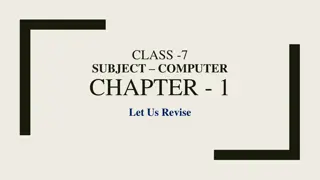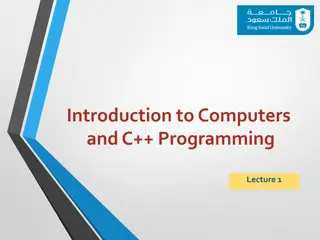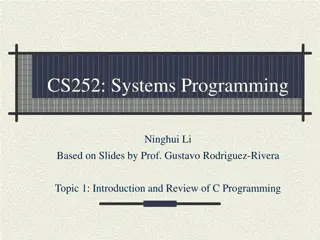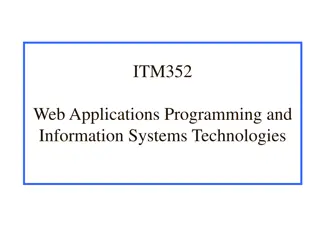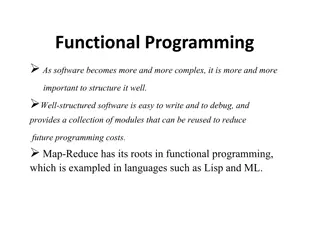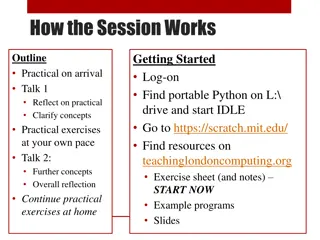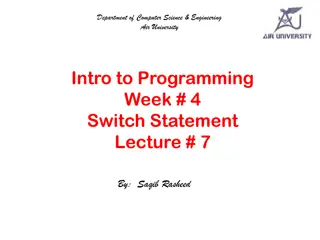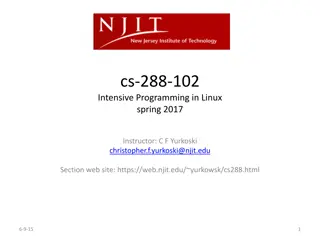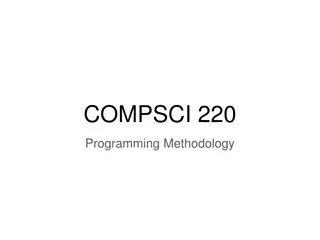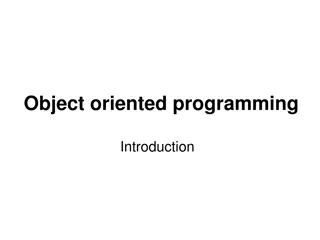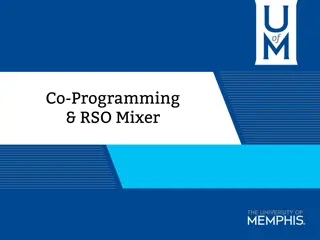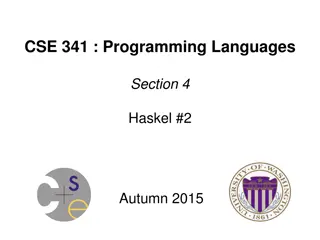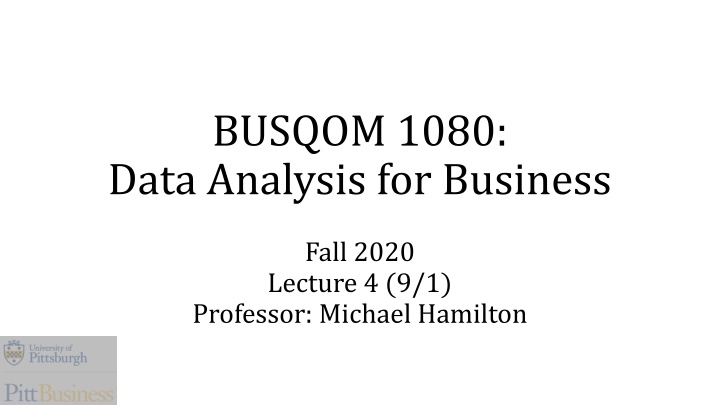
Data Analysis for Business: Introduction to For Loops in R Programming
Learn about for loops in R programming, a fundamental concept in data analysis for business. Discover how to automate processes, iterate through data, and manipulate vectors using loops. Dive into the anatomy of a for loop and get ready to practice with examples in this lecture.
Download Presentation

Please find below an Image/Link to download the presentation.
The content on the website is provided AS IS for your information and personal use only. It may not be sold, licensed, or shared on other websites without obtaining consent from the author. If you encounter any issues during the download, it is possible that the publisher has removed the file from their server.
You are allowed to download the files provided on this website for personal or commercial use, subject to the condition that they are used lawfully. All files are the property of their respective owners.
The content on the website is provided AS IS for your information and personal use only. It may not be sold, licensed, or shared on other websites without obtaining consent from the author.
E N D
Presentation Transcript
BUSQOM 1080: Data Analysis for Business Fall 2020 Lecture 4 (9/1) Professor: Michael Hamilton
Course Specifics Outline for today: 1. Topic: For Loops [15 Mins] 2. Topic: If/Else Statements [15 Mins] 3. Recap of what we ve learned so far [15 Mins] 4. Misc. Course Updates Lecture 4- Introduction to R Programming II
Topic: For Loops Looping Looping (also known as cycling, iterating) is simply automating a multi-step process by organizing sequences of actions and grouping the parts that need to be repeated. Loop types: For For, While, doWhile etc. General Advice General Advice: Learning about loops gives you a detailed view of what it is supposed to happen at the elementary level as well as they provide you with an understanding of the data that you re manipulating. After you have gotten a clear understanding of loops, work to get rid of them! Diagram: Structure of a for loop Lecture 4- Introduction to R Programming II
Topic: For Loops A for loop repeats a block of code a set number of times. Very useful for looking through data programmatically (examples to follow!) Anatomy of a for loop: Initialization: The state of things before the loop executes Loop Variable & Loop Vector: R keeps track of the number of loop iterations (block code executions) with a loop variable. After each iteration, R updates the Loop Variable by looking into the Loop Vector. When the iteration reaches the end of the vector the loop terminates. Body of Loop: This is the code that is executed at each loop iteration Diagram: Structure of a for loop Lecture 4- Introduction to R Programming II
Topic: For Loops Syntax of the a for loop, bolded in blue are the special ingredients Example 1: Basic Loop Example break down Initialization: Nothing here, there s nothing defined before the execution of the for loop. Loop Variable & Loop Vector: The loop variable here is i and the loop vector is 1:5 (equiv. to c(1,2,3,4,5)). Body of Loop: The code that s being repeated at each iteration is the statement print(i) which prints out the value of i. Lecture 4- Introduction to R Programming II
Example 2: Manipulating vectors using loops Topic: For Loops Example break down Initialization: The vector data is set to a vector of six elements, drawn according to a Norm(0,1). Loop Variable & Loop Vector: The loop variable here is again i and the loop vector is 1:length(data) (equiv. to c(1,2,3, , length(data)). Body of Loop: The code that s being repeated at each iteration is the statement data[i] <- data[i]^2 which at each loop iteration, accesses the ith element of data (NOTE i changing!), squares it and overwrites the previous value of data[i] with it. In the Zoom session + Group Activity + Assignment 3 we will practice with for loops. Lecture 4- Introduction to R Programming II
Topic: If/Else Statements Often, you need to execute some statements only when some condition is met (especially in conjunction with functions and for loops!). The If/Else is the way to conditionally run code in R Syntax in R Logical Flow of If/Else Lecture 4- Introduction to R Programming II
Topic: If/Else Statements Let s look at some examples! Things to note: The if( ) takes in a boolean, here that boolean is named condition . The code between the braces { } only evaluates if that boolean is TRUE, else it skips that code! This is programmatic! We never peak inside the variable data, R does it for us! Lecture 4- Introduction to R Programming II
Topic: If/Else Statements Let s combine this with loops Loops let us look through a vector The if/else statements lets us make decisions on each element of the vector Things to note: The for loop repeats the if statement once for each element of the vector data. The if statement checks if the element of data is less than 0, if it is then the code inside the braces runs. That code sets the element of data[i] to 0. End result: This code sets all the negative values of data to 0. Note: There s equivalent vectorized code! > data[data < 0] = 0 Lecture 4- Introduction to R Programming II
Summary That completes the Introduction to R Bootcamp Topics covered: 1. Interacting with R, R Notebooks Lecture 2 as 2. Data Types Lecture 2 3. Logical Operations Lecture 2 4. Vectors Lecture 2 5. Subsetting Vectors Lecture 2 6. Lists + Matrices Lecture 3 7. DataFrames Lecture 3 8. Writing Functions Lecture 3 9. For loops Lecture 4 10. If/Else Statements Lecture 4 These are the fundamentals; we will practice with these concepts extensively to reinforce them! Lots more to learn! Lecture 4- Introduction to R Programming II
For Next Time In the zoom session we will do many more examples for loops and if statements, especially with Dataframes! Assignment 2 is due on Friday (9/4) Assignment 3 will be posted shortly, due the Friday after (9/11) Thanks! Lecture 4- Introduction to R Programming II



